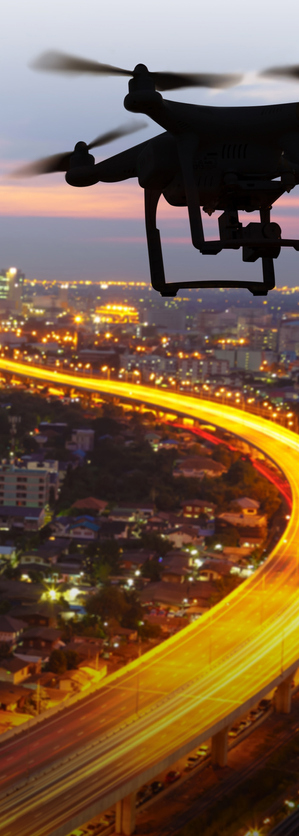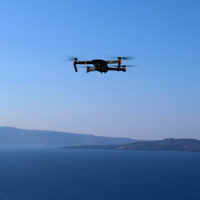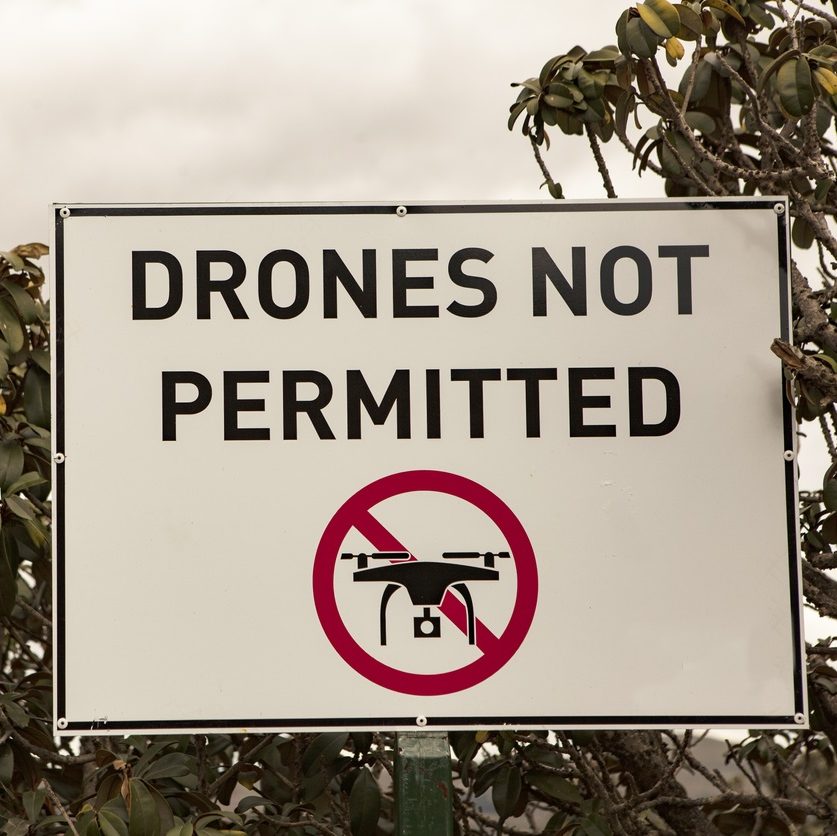
Florida Law Catches Up to Stalking Drones
By James Michael Shaw , Jr., Ryan Hilton | Blog Posts
October 7, 2022
Overview | Blog Posts | Aviation | Ryan Hilton, James Michael Shaw , Jr. | Related | Print | Share
The Federal Aviation Authority (“FAA”) Reauthorization Act of 2018 (the “Act”) was signed into law on October 5, 2018, by President Donald Trump.[1] The Act was the first five-year FAA reauthorization since 1982. Such reauthorizations provide the FAA with guaranteed funding for the next five years. The Act contains a plethora of supplementary provisions in addition to the provisions regarding the authorized funding of the FAA. The Act can be broken down into five areas: (1) funding authorizations; (2) airline customer service; (3) aviation safety; (4) airports; and (5) unmanned aviation systems (“UAS”), also known as drones.
The Act contains a number of important provisions for commercial and recreational drones. A large part of the Act concerns drones, setting up the future of the FAA as it attempts to fully integrate the airspace with the growing number of drones. Much of the provisions in the Act add to the groundwork laid in 2012, but there are some notable additions and clarifications.
As far as the recreational use of drones, the Act repealed the Special Rule for Model Aircraft, also known as Section 336. Hobbyist drone pilots are now subject to FAA regulations similar to the regulations commercial drone pilots are required to operate under. Prior to the Act, hobbyists were treated as an entirely separate group of drone pilots from those flying commercially. That is no longer the case: all drones will now be viewed similarly by the FAA, at least from a regulatory perspective.
In addition to now being subject to regulations prohibiting flight operations near airports at or above 400 feet—restrictions commercial pilots have had to comply with under the FAA’s Part 107 rules—the Act allows the FAA to require hobbyist drone pilots to pass an aeronautical knowledge and safety test before flying. (Commercial pilots must already pass the Part 107 test and receive a Part 107 certificate to fly.) However, the FAA is not currently requiring hobbyist drone pilots to take and pass an aeronautical knowledge and safety test. It is unclear if and when the FAA will do so.
According to the FAA’s website, the Act imposes the following requirements upon hobbyist drone operators (with no mention of taking and passing a test, at least not yet):
On its website, the FAA also stated: “Updated direction and guidance will be provided as the FAA implements this new legislation.”
One of the most controversial aspects of the Act is that it gives the government, in particular, the Department of Homeland Security, the ability to “track,” “disrupt,” “control” and “seize or otherwise confiscate” any drone that is deemed a “credible threat.” The Act does not define “credible threat,” but a notation says that it will later be defined in agreement by both the Secretary of Transportation and the Attorney General. The threat must be to a “covered facility or asset,” not just general airspace. This authority allows the government to act without restricting its decision with regard to any warrant requirement. Lawmakers argued that they needed this new authority to better protect large events and special facilities from drone attacks and to give the government the breathing space it needs to test potential anti-drone technologies. Critics warn that this authority extended to the government in taking down and seizing recreational and commercial drones is too broad, giving unfettered power to the government. Others argue that it has always been implied that the government already had this authority anyway.
Other changes in the Act that affect drones include:
In Section 348 of the Act, the FAA is given one year to update existing regulations to authorize the carriage of property by operators of small UAS for compensation or hire. It is expected that the FAA will create a certification process for UAS operators who want to carry/deliver property for compensation or hire within the United States.
In Section 364 of the Act, the FAA is tasked to review agencies currently authorized to operate Counter-Unmanned Aircraft Systems (“C-UAS”). The review should include the process of interagency coordination of C-UAS activity and standards for the operation of C-UAS. Congress has asked to examine progress on this review within four months of the passage of the Ac, which would be no later than early February 2019.
In Section 376 of the Act, the FAA is requested to compose a plan for the full operational capability of UAS traffic management (“UTM”) with NASA and UAS industry stakeholders. They shall develop a plan to allow the implementation of UTM services that expand operations beyond visual line of sight while maintaining the FAA Extension, Safety, and Security Act of 2016. This section also outlines requirements for the completion of the UTM System Pilot Program.
Many in support of the Act believe that it will effectively do the following things:
[1] The Act can be viewed in its entirety at https://www.congress.gov/bill/115th-congress/house-bill/302/text.
[2] See https://www.faa.gov/news/updates/?newsId=91844.
Follow Butler On Drones for the most up-to-date drone news!
For any further questions, please contact Ryan Hilton or James Shaw, Jr.

By James Michael Shaw , Jr., Ryan Hilton | Blog Posts
October 7, 2022


By Ryan Hilton | Blog Posts
January 26, 2021

